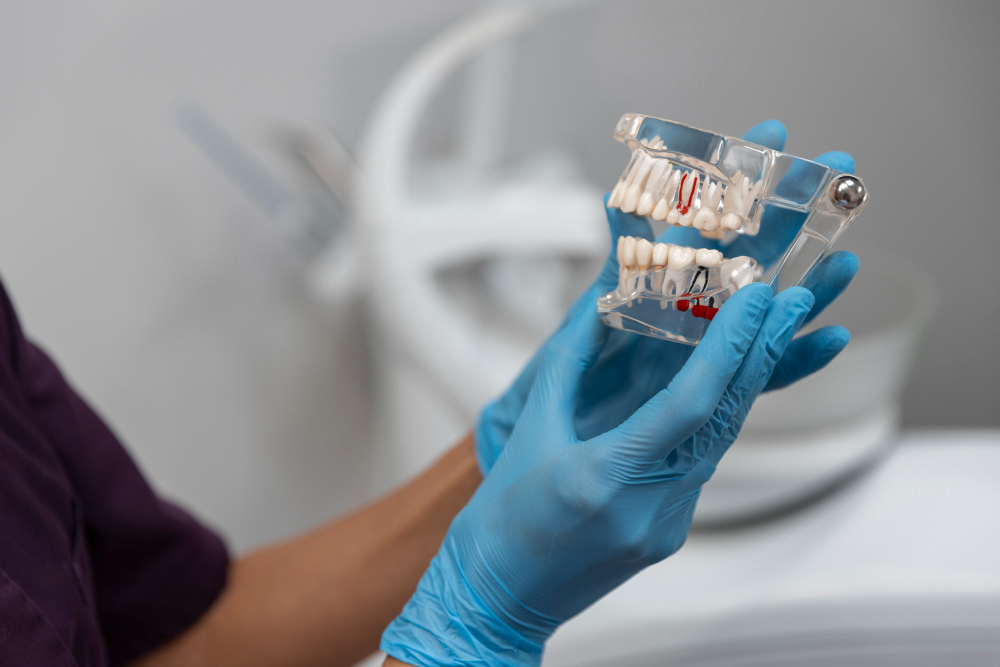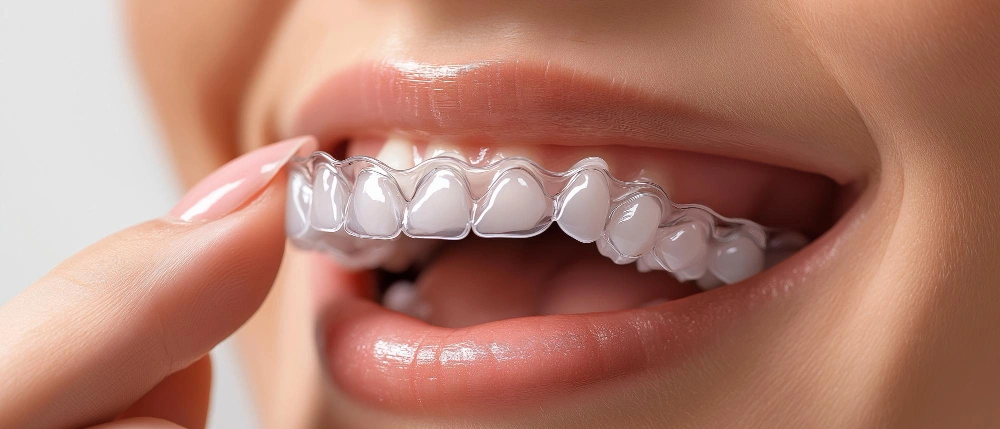Have you noticed that your teeth seem longer than usual lately? Do your gums appear red or swollen? If yes, you may be dealing with gum disease.
When detected in its early stages, known as gingivitis, these symptoms can be reversed. However, if left untreated, more serious issues, such as gum recession, may concern you. This begs an answer to the question:
Can gum tissue grow back after periodontal disease?
What is Periodontal Disease?
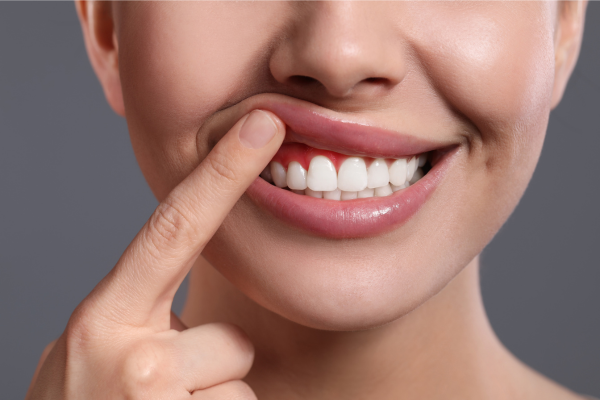
Periodontal disease, also known as gum disease, is a problem that happens when the gums in your mouth get infected and swollen. This swelling happens because of a sticky layer of germs called plaque that builds up on your teeth.
Many things can make gum disease worse or even cause it, like not taking good care of your teeth, having teeth that aren’t straight, or having problems with fillings. Even dentures or bridges that don’t fit right and health conditions like Down syndrome or Crohn’s disease can play a part.
Gum disease has two main parts. First, there’s gingivitis, which makes your gums red and swollen. If you don’t treat it, gingivitis can become periodontitis, which is worse. In periodontitis, there are four levels of how bad it can get.
During periodontitis, your gums start to pull away from your teeth, and little pockets form between your teeth and gums where bad germs can gather. These germs make the swelling and damage even worse.
If your gums pull away too much, it can make your bones shrink, and your teeth might become shaky or even fall out.
Other Causes of Gum Recession
Besides gum disease, several factors can make your gums pull back or recede. Other reasons for gum recession consist of:
- Brushing your teeth too vigorously.
- Grinding your teeth.
- Smoking or using tobacco products.
- Certain medications.
- Hormonal shifts.
- Genetic predisposition.
So, Can Gum Tissue Grow Back After Periodontal Disease?
If you were to ask a periodontist, “Can gum tissue grow back after periodontal disease?” the straightforward answer would be no, they cannot.
While it would be great if these soft tissues could naturally return to their original position after treatment, unfortunately, that’s not the case. Instead, you and your periodontist will need to create a surgical plan to place new tissue over the vulnerable areas of your tooth structure.
The most common method for achieving this is through a procedure called gum grafting. This procedure includes removing tiny tissues from the roof of your mouth and connecting it to the spots where your gums have moved away, effectively covering the exposed parts of your teeth.
In some cases, especially if there’s substantial bone loss, your periodontist might also perform a bone graft. Furthermore, they might perform osseous surgery to decrease the depth of gum pockets, which can trap harmful bacteria and promote the spread of infection.
How to Prevent the Recession of Gums?
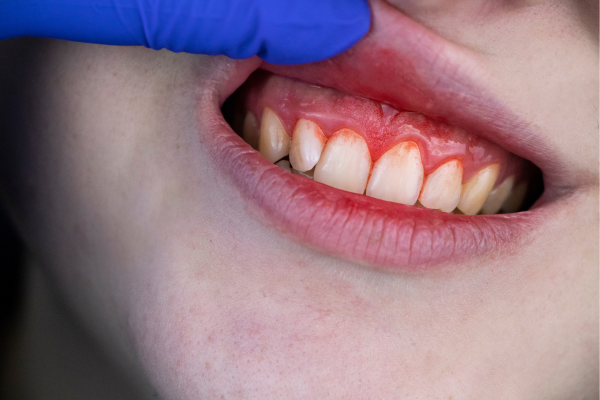
Here are some suggestions to help slow down or halt the progression of receding gums:
Maintain Excellent Oral Hygiene
To promote gum health, follow these oral hygiene practices:
- Regularly floss your teeth.
- Use toothpaste that contains fluoride.
- Brush your teeth and gently massage along the gum line twice daily with a soft-bristle toothbrush.
- Utilize an antiseptic or fluoride mouthwash to reduce bacteria and clear away debris.
- Select a toothbrush that’s the right size and shape to reach every part of your mouth.
- Replace your toothbrush every 2-4 months.
- Keep up with regular dental checkups.
Adopt the Right Brushing Technique
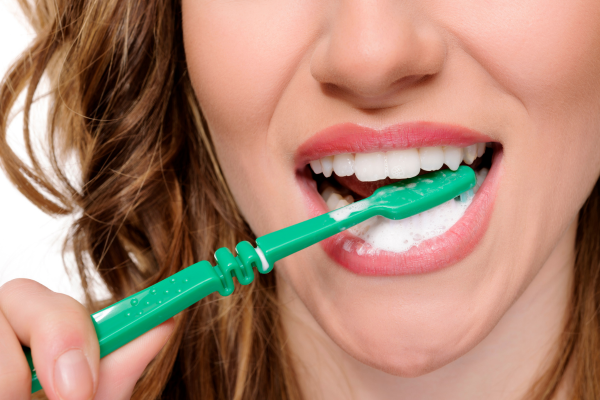
Employing the correct brushing technique can prevent gum recession. The American Dental Association suggests the following:
- Angle the toothbrush at 45 degrees against the gums.
- Use gentle pressure and make small, precise back-and-forth strokes.
- Clean the outside and inside of your teeth, as well as the surfaces you chew with.
- When you’re cleaning the inside surfaces of your front teeth, hold the toothbrush upright.
- Brush your teeth for a total of 2 minutes. You can also consult your dentist for personalized advice on managing receding gums.
Wear a Mouthguard
If you grind your teeth at night, a mouthguard or splint can prevent gum recession. Mouthguards create a physical barrier between upper and lower teeth by evenly distributing pressure across the jaw. You can find mouthguards at most pharmacies, or your dentist can create a custom-fit mouthguard for better comfort and protection.
Replace Ill-Fitting Dentures
Over time, partial dentures may no longer fit well due to shrinking gum ridges, changes in jaw alignment, or general wear and tear. By rubbing against the gums, ill-fitting dentures can contribute to gum recession around healthy teeth. Prevent this by replacing partial dentures when needed. Prevent this by replacing partial dentures when needed.
Regular Dental Checkups
Attending routine dental checkups is crucial for early detection of gum recession. These visits also enable your dentist to identify and replace faulty fillings or ill-fitting partial dentures, which can contribute to receding gums.
Conclusion
Whether you’re worried about the appearance of receding gums or not, it’s essential to steer clear of the associated health issues. Remember, your oral health doesn’t only impact your teeth and mouth; it has implications for your entire body.
A person with gum disease has a greater chance of developing significant health conditions, including strokes, diabetes, and heart disease. So, if you’re dealing with gum recession, don’t hesitate to reach out to us for assistance.
Contact us today at 763-576-1855 to learn more about treatments.
FAQs
How long does it take for the gums to heal from periodontal disease?
The healing process for early to moderate periodontal disease typically takes 2 to 3 weeks, provided proper intervention, like scaling and root planing, is administered. In cases of severe periodontal disease, recovery times can vary. With the appropriate treatment, some patients may experience recovery in as little as 5 to 8 weeks.
Is gum disease curable?
A complete cure is often unattainable because it’s usually not fully reversible once you lose the structural support around your teeth. Nevertheless, periodontal treatment can help minimize infection and partially restore bone and tissue. Additionally, genetic factors play a role, as various types of oral bacteria are involved in this process.
Is periodontal disease genetic?
Recent research indicates that periodontal disease can be influenced by your genetic inheritance, making you potentially more prone to periodontitis. Aggressive Periodontitis is a condition characterized by rapid bone loss around specific teeth, and in severe cases, it may impact all of your teeth.


